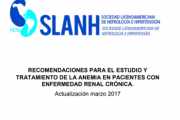
Novel HLA class I associations with HIV-1 control in a unique genetically admixed population
Humberto Valenzuela-Ponce1, Selma Alva-Hernández1, Daniela Garrido-Rodríguez1, Maribel Soto-Nava1, Thalía García-Téllez1,14, Tania Escamilla-Gómez1, Claudia GarcíaMorales1, Verónica Sonia Quiroz-Morales1, Daniela Tapia-Trejo1, Silvia del Arenal-Sánchez1, Francisco-Javier Prado-Galbarro 1, Ramón Hernández-Juan1, Edna Rodríguez-Aguirre1, Akio Murakami-Ogasawara1, Carlos Mejía-Villatoro2, Ingrid Y. Escobar-Urias2, Rodolfo Pinzón-Meza2, Juan Miguel Pascale3, Yamitzel Zaldivar3, Guillermo Porras-Cortés4, Carlos Quant-Durán5, Ivette Lorenzana6, Rita I. Meza7, Elsa Y. Palou8, Marvin Manzanero9, Rolando A. Cedillos10, Carmen Aláez 11, Mark A. Brockman 12,13, P. Richard Harrigan13, Chanson J. Brumme13, Zabrina L. Brumme12,13, Santiago Ávila-Ríos1, Gustavo Reyes-Terán1
The Mesoamerican HIV Project Group* Associations between HLA class I alleles and HIV progression in populations exhibiting Amerindian and Caucasian genetic admixture remain understudied. Using univariable and multivariable analyses we evaluated HLA associations with fve HIV clinical parameters in 3,213 HIV clade B-infected, ARTnaïve individuals from Mexico and Central America (MEX/CAM cohort). A Canadian cohort (HOMER, n=1622) was used for comparison. As expected, HLA allele frequencies in MEX/CAM and HOMER difered markedly. In MEX/CAM, 13 HLA-A, 24 HLA-B, and 14 HLA-C alleles were signifcantly associated with at least one clinical parameter. These included previously described protective (e.g. B*27:05, B*57:01/02/03 and B*58:01) and risk (e.g. B*35:02) alleles, as well as novel ones (e.g. A*03:01, B*15:39 and B*39:02 identifed as protective, and A*68:03/05, B*15:30, B*35:12/14, B*39:01/06, B*39:05~C*07:02, and B*40:01~C*03:04 identifed as risk). Interestingly, both protective (e.g. B*39:02) and risk (e.g. B*39:01/05/06) subtypes were identifed within the common and genetically diverse HLAB*39 allele group, characteristic to Amerindian populations. While HLA-HIV associations identifed in MEX and CAM separately were similar overall (Spearman’s rho=0.33, p=0.03), region-specifc associations were also noted. The identifcation of both canonical and novel HLA/HIV associations provides a frst step towards improved understanding of HIV immune control among unique and understudied Mestizo populations.



